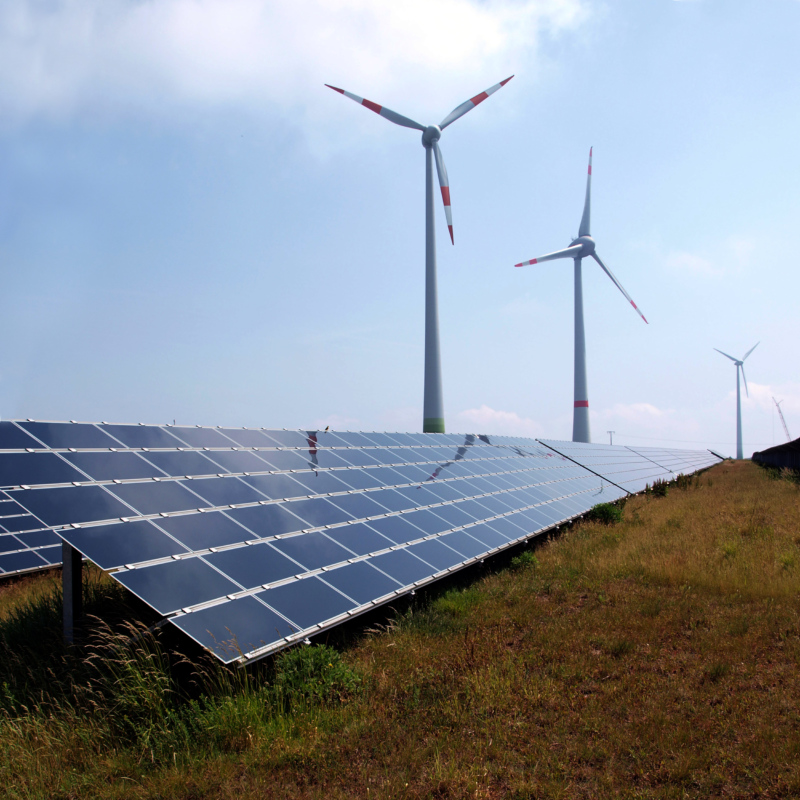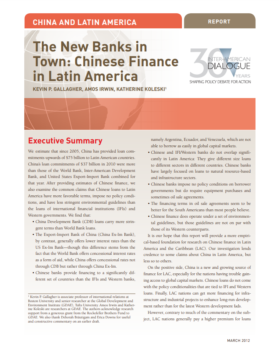The Politics Of Disaster Relief
After a 7.0 magnitude earthquake struck Haiti, the aftershock reached China in ways that few anticipated.The earthquake forced Chinese leaders to navigate the tricky politics of disaster relief.
On November 30, Kevin Gallagher and Fei Yuan of the Boston University Global Economic Governance Initiative (GEGI) presented key findings from their newly-released report, “Greening Development Finance in the Americas,” at the Inter-American Dialogue. Gallagher, Yuan, and commentator Rogerio Studart of the Universidade Federal do Rio de Janeiro all suggested that development banks have a much larger role to play in spurring sustainable and environmentally-responsible development in the coming years.
In their report, Gallagher and Yuan assess the extent to which financing from eleven development banks active in Latin America is supportive of sustainable, “green” development, as defined by the UN Sustainable Development Goals (SDGs). In doing so, the authors use a new tracking methodology agreed upon by the major multilateral, sub-regional, and national development banks.
According to their findings, the Inter-American Development Bank (IDB), the World Bank, and CAF – Development Bank of Latin America have the highest levels of green financing in Latin America when measured by total volume. According to this measure, US Export-Import Bank and China Development (CDB) are the weakest performers. CDB provides the most fossil fuel energy and conventional infrastructure financing.
CAF also ranks high in provision of green finance as a share of its total finance to Latin America. KfW Development Bank (Germany), the European Investment Bank, and China Export-Import Bank (Chexim) also boast a fairly high share of green projects. Chexim’s loan for metro line development in Buenos Aires – a green project – accounts for a considerable portion of the bank’s overall lending in Latin America.
The authors indicated that Latin America’s top providers of development finance have very different approaches to standards development and enforcement when operating in the region. The World Bank, Inter-American Development Bank, and others have tended to operate according to harmonized international standards and safeguards. Chinese banks and BNDES generally adhere to host country standards, however strict or lax, with monitoring and enforcement largely coordinated by the banks themselves.
Both of these models have benefits and drawbacks – the many safeguards and standards associated with WB and IDB lending can prolong the loan approval process and limit finance in certain sectors. China is generally able to distribute financing far more quickly, but lacking environmental and other safeguards could threaten project sustainability.
Despite their relatively low levels of green finance in Latin America, all speakers agreed that development banks will have a critical role to play in supporting sustainable and environmentally-responsible development in the region in the coming years. “Greening Development Finance in the Americas” recommends strengthening the capacity of development banks to invest in green finance by increasing the capital base of existing banks, creating new “green” banks, scaling up “green bond” programs, expanding sustainable co-financing program, and through other measures.
As Rogerio Studart indicated, development banks must undergo some transformation in order to sufficiently address sustainability challenges. These banks must increasingly leverage and “crowd in” private capital to finance sustainable production and transportation.
After a 7.0 magnitude earthquake struck Haiti, the aftershock reached China in ways that few anticipated.The earthquake forced Chinese leaders to navigate the tricky politics of disaster relief.
Estimates of the volume, composition, and characteristics of Chinese lending to the region since 2005.
Developing scenarios that would lead to another financial crisis is not a fictional exercise; the risk of another crisis is very real.
 Armin Kübelbeck / CC BY-SA 3.0
Armin Kübelbeck / CC BY-SA 3.0
